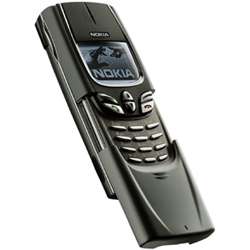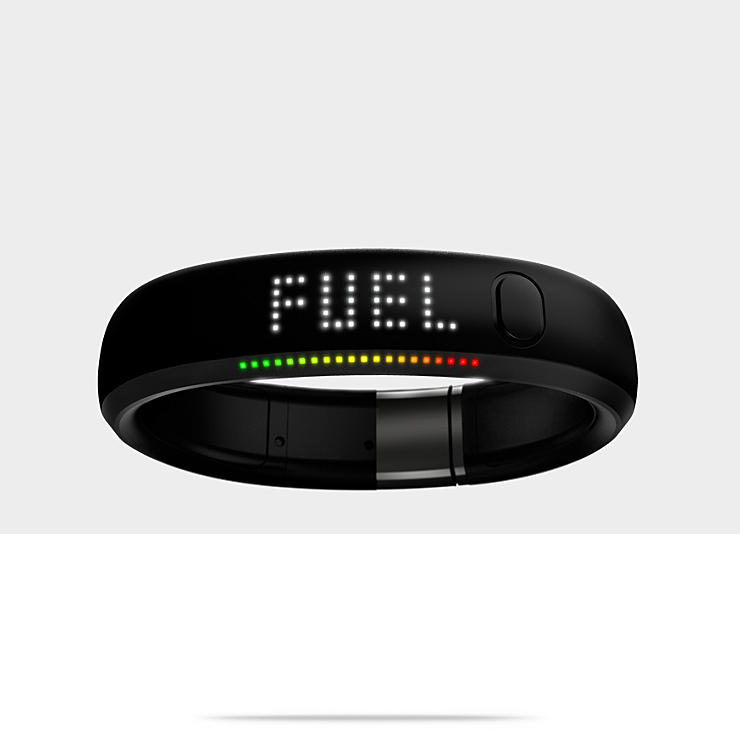Ever since I have been working with and speaking about mobile technologies and its unique features, the fact that it was, erm, mobile was and remains key. This sounds odd at first sight but when you look back at the relatively brief history, you’ll see that the number of use cases, addressable user base and, consequently, mass effects with subsequent ubiquity depend crucially on size, weight, etc.
Does Size Matter?
 For a while, this meant people were taken down a path where everyone thought that the biggest innovation in mobile tech was building ever smaller phones. That was until people realized that a minute screen and tiny buttons weren’t really that helpful after all. I remember holding the Nokia 8890, which was so tiny that I struggled to even make a phone call with it (and there was more to come).
For a while, this meant people were taken down a path where everyone thought that the biggest innovation in mobile tech was building ever smaller phones. That was until people realized that a minute screen and tiny buttons weren’t really that helpful after all. I remember holding the Nokia 8890, which was so tiny that I struggled to even make a phone call with it (and there was more to come).
At the moment, we see the opposite: user interfaces rule and bigger seems better (5” screens seem fast becoming the norm).
Usefulness Matters!
So why are all these very smart people that design phones get it wrong seemingly so often (or why else the yo-yo effect in phone sizes?). The key is usefulness. Back in the mobile dark ages, no one was bothered with web browsing, 3D games, etc because it was not available. Too little bandwidth, too poor screens, too little computing power. In that context, smaller size equaled higher portability and therefore better accessibility to the limited uses one had, namely making and receiving phone calls and texting (which the pros could do blindly, one-handed in the pocket anyway, which is why size didn’t matter that much after all).
Different story today: people try to do everything on their phone, including uses that often are not (yet) mobile optimized (how many web pages don’t render properly still today). Power is there, beautiful screens readily available, max it out. Enter the monster-size touchscreen phones, phablets and what-not.
Size & Form Follow Use Case
Note that the use cases I mentioned are all application-driven, not hardware-driven (they are – sometimes – hardware-constrained, but not driven by it).
This means that, where you can provide applications in a form factor that is less in your way; in other words, smaller or, shall we say, of a less intrusive format, that latter one wins. Who wants to haul a 5” phone around on a warm summer day where you don’t wear this bulky coat with the practical pockets?
Wearables: Google Glass and then?
 In recent weeks, the (geek) world was in awe (or joking about) Google Glass and envious of (or mocking) every one who had one. And, of course, media, politicians and assorted doomsday prophets were quick to point out the dangers and challenges of the device: privacy concerns, etc. etc.
In recent weeks, the (geek) world was in awe (or joking about) Google Glass and envious of (or mocking) every one who had one. And, of course, media, politicians and assorted doomsday prophets were quick to point out the dangers and challenges of the device: privacy concerns, etc. etc.
Most of the stuff I have seen is focusing on everyday tasks for all of us (here is a list of available applications). But then, hey, Google Glass is a Google product and Google is, first and foremost a company with a very broad target market: everyone. Note that I have never worn one of these (I was merely close to destroying a pair when I accidentally – and literally – bumped into Sergey Brin and nearly knocked them off him). But why do we think that there can only be these broad, consumer-focused use cases?
 There is of course a lot more going on in the wearable space: people look at smart fibres that could be used in clothes that could charge devices; any number of sports companions are already in the wild and – judging by my Facebook stream – prosper. Nike’s + system, Adidas miCoach and any number of specialized bicycle enthusiast things combined with slick software seem to do the trick.
There is of course a lot more going on in the wearable space: people look at smart fibres that could be used in clothes that could charge devices; any number of sports companions are already in the wild and – judging by my Facebook stream – prosper. Nike’s + system, Adidas miCoach and any number of specialized bicycle enthusiast things combined with slick software seem to do the trick.
Back to Usefulness
However (and that’s a big however) the overall usefulness is pretty limited so far. Why, you say? (because you are, after all, likely to be some tech-loving uber-geek – or why would you otherwise still read these lines?). Well, because you need any number of connections, adapters, cables, actions to upload, download, post, combine, data-dump, you name it in order to make use of the data your snazzy hipster devices and accessories collect. This is great fun and helps drive innovation (or, perhaps better, exploration) of what might or might not work. But (and, again, a big but), it won’t cut it for John Doe/Smith/Mueller. Because it is not useful (enough).
Form and Context Matter
And this is where it gets really interesting: Nike’s Fuelband is rather unintrusive. What isn’t is the frigging download to my phone or computer to actually make sense of it. Because, a wristband doesn’t offer the best user interface on its own (this is not criticism; I think it is a pretty cool device and there is a balance to strike between durability, comfort and information supply). You need to switch on Bluetooth (which you will normally have off to save battery), sync to your phone and then action it. Or you plug it into your computer (plug! What?) and do the same. Media breaks kill interaction. Additional steps make people lose John Doe’s attention. And therefore it is not (yet) ideal. Now then, the combo of a sensor-equipped wearable device, low-energy Bluetooth 4 (which you can leave on as it consumes so little the battery is likely to outlive your device) and some invisible background sync to other devices? Much closer.
And this is where Google Glass (and other devices in that mould) start coming into their own: they offer new interaction opportunities that weren’t there before. They help remove media breaks. Will we all be walking around with a set of those things at dinner parties? Probably not (unless you’re Sergey Brin; I bet he would). Would they make a ton of sense though if I was working as, say, a UPS delivery driver (maps? delivery schedule?), a construction engineer (plans? lay-outs? static calculations?). You bet!
It is always the combination of form and context. Because: when I am going out to a black-tie dinner, that good old minute Nokia phone would probably still not make as big a bulk in my dinner jacket as this big current-day smartphone does. And you know what? My kids could still reach us!
